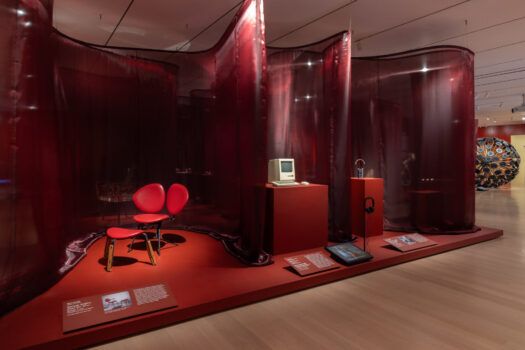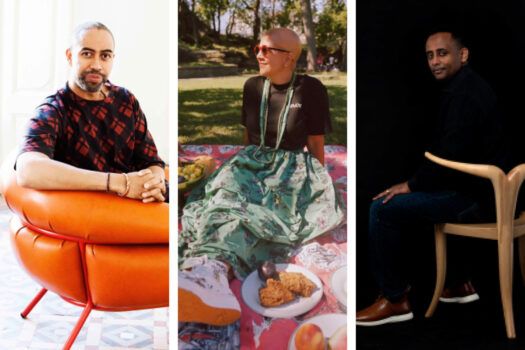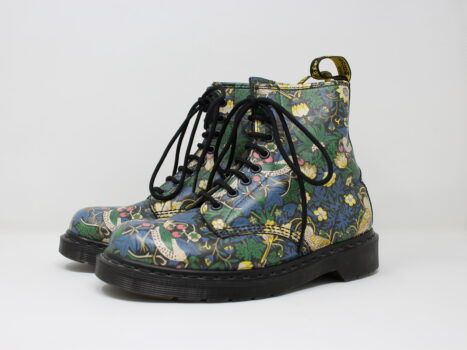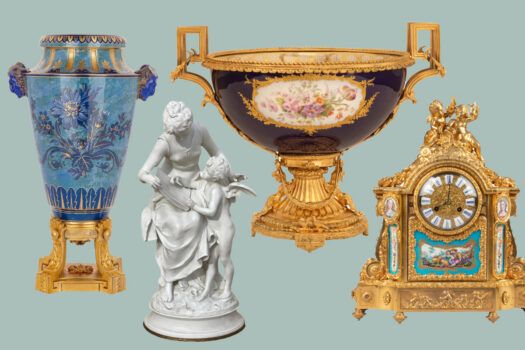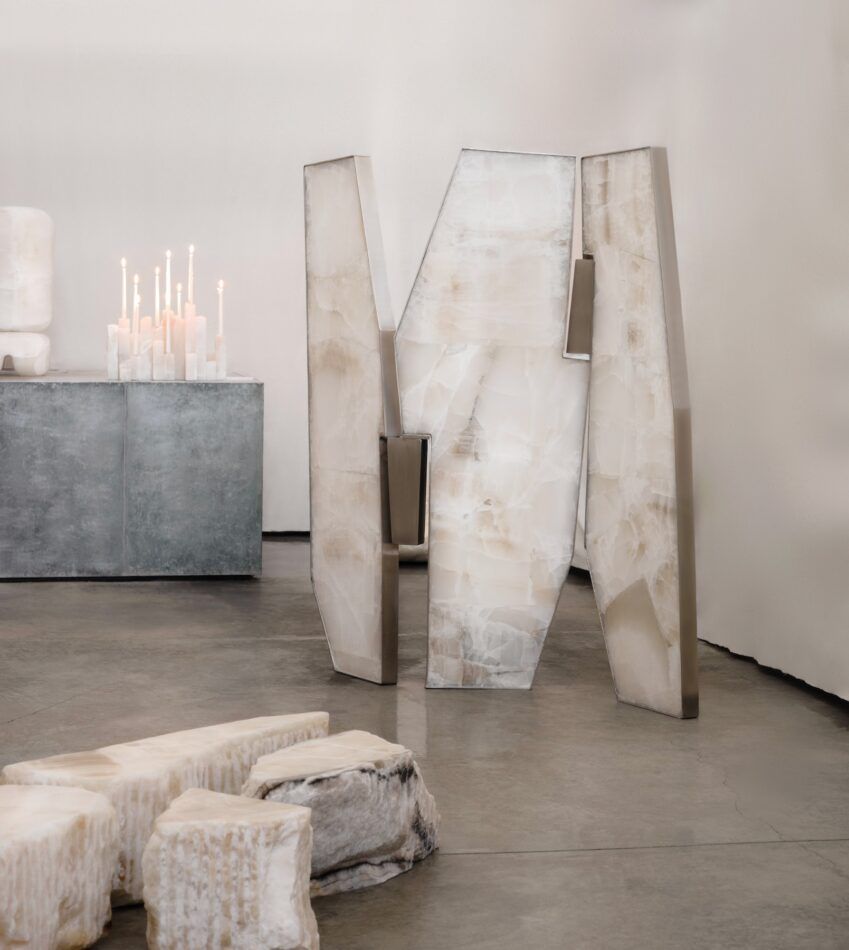
Since its founding, in 2015, Galerie Philia has logged significant mileage. The brainchild of siblings Ygaël and Yaïr Attali, the innovative contemporary design gallery has opened showrooms in Geneva, New York City, Singapore and Mexico City; hosted residencies for designers and craftspeople in France, Italy and Turkey; and set up temporary exhibitions in an 11th-century Milanese church and on a beach in the Dominican Republic, among other locations.
The thinking behind its latest venture, however, is to keep the mileage to a minimum. “A problem with which we’re permanently confronted is that we take great care to make sure we manufacture our pieces in an environmentally friendly fashion, and then they end up being sent 2,500 miles by plane” for exhibitions, says Ygaël, who acts as the gallery’s artistic director, while his brother oversees the business side of things.
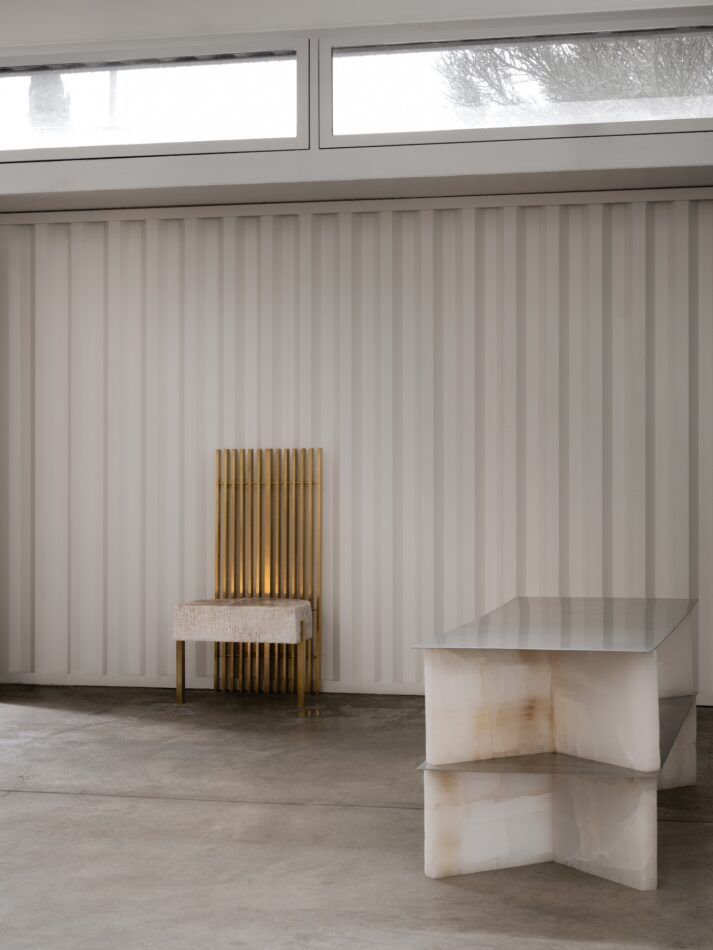
The Attalis’ response to that conundrum is Philia Editions — limited-edition collections that will be exhibited close to where they are made. Their chosen production site is in the Baja California region of Mexico, because of the wealth of different stones found there.
For the inaugural collection, titled “Materia Perpetua,” 10 designers were invited to work chiefly with onyx. “It’s a material I adore,” says Ygaël. “I love its expressive veins, its transparency and versatility.” He is also fascinated by its place in history. “It’s had a crucial importance in numerous civilizations, whether for religious or everyday use,” he adds, pointing out that there are references to onyx vases in the Bible and that it was a prized medium for sculpture in ancient Egypt.
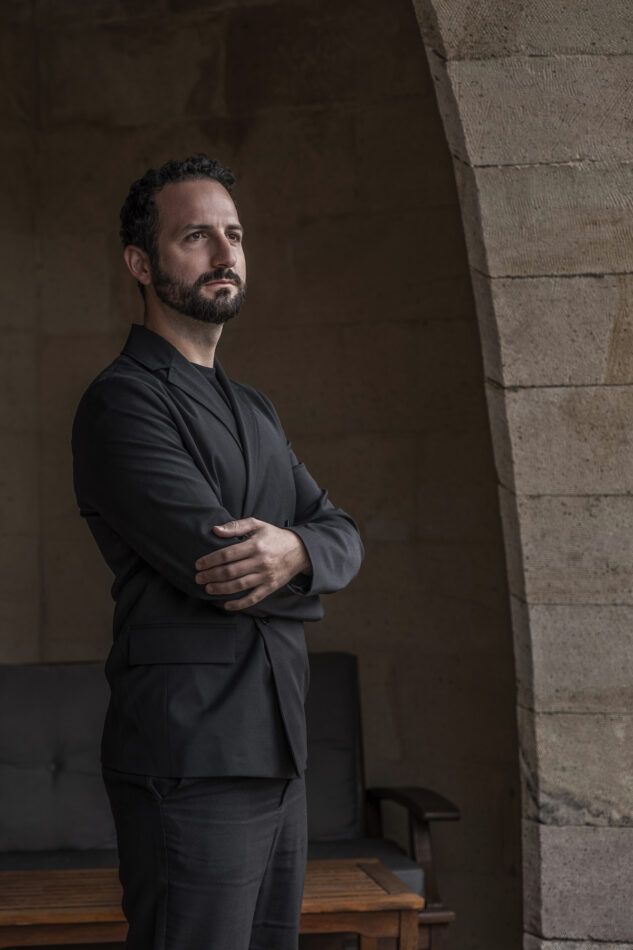
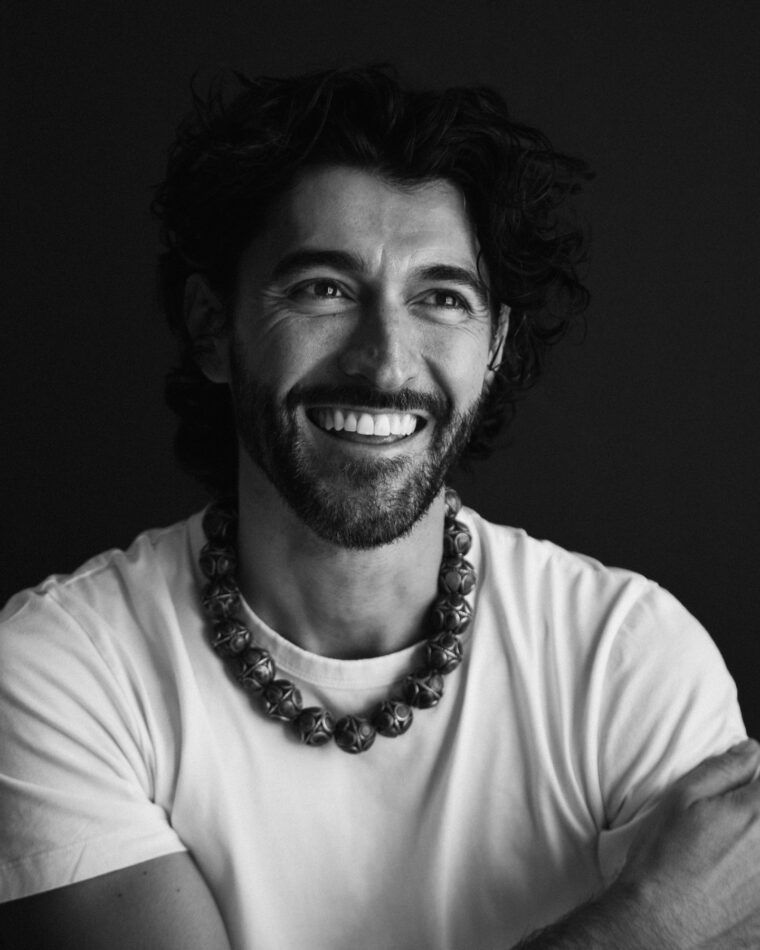
The debut Philia Editions show is being held just a two-and-a-half-hour drive up the coast. Timed to coincide with the fifth edition of the Frieze Los Angeles contemporary art fair, it is on view through March 3 in the striking new studio of Italian-born interior designer Giampiero Tagliaferri, in the city’s Silver Lake district.
Built in 1985, the three-story structure was transformed by architect Wes Jones in the late ’90s into a home and studio for the drummer Rob Brill (a member of the band Berlin, whose greatest success was “Take My Breath Away,” the theme of the original Top Gun movie). The interior’s most salient feature is a platform on the second level that can be winched back and forth, on which Brill used to play his instruments. “The building has elements of brutalism that I love,” says Tagliaferri. “It’s very much part of my style.”
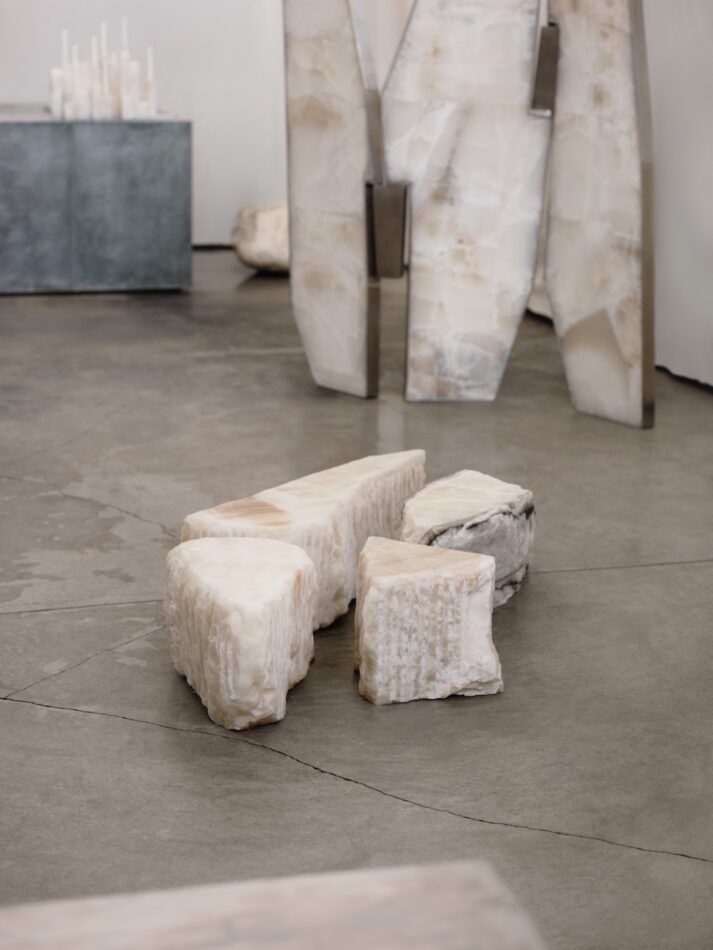
For “Materia Perpetua,” the ground floor has been entirely draped with fabric, creating a minimalistic and ethereal atmosphere. “It’s very, very pure and light,” says Ygaël. “So, the focus is very much on the pieces.”
Those pieces include a pared-down console table by Milan-based Studiopepe combining onyx and stainless steel, a cubic chair by fellow Italian Pietro Franceschini made from small onyx blocks and a highly polished curvaceous stool by Australian designer Henry Wilson, described by Ygaël as “like a modern version of a Brancusi sculpture.” In contrast, the base of Mexican maker Andrés Monnier’s mirror was left deliberately raw. “When you see both together, you wouldn’t think it was the same stone,” Ygaël notes. “It’s great to show the scope of the material.”
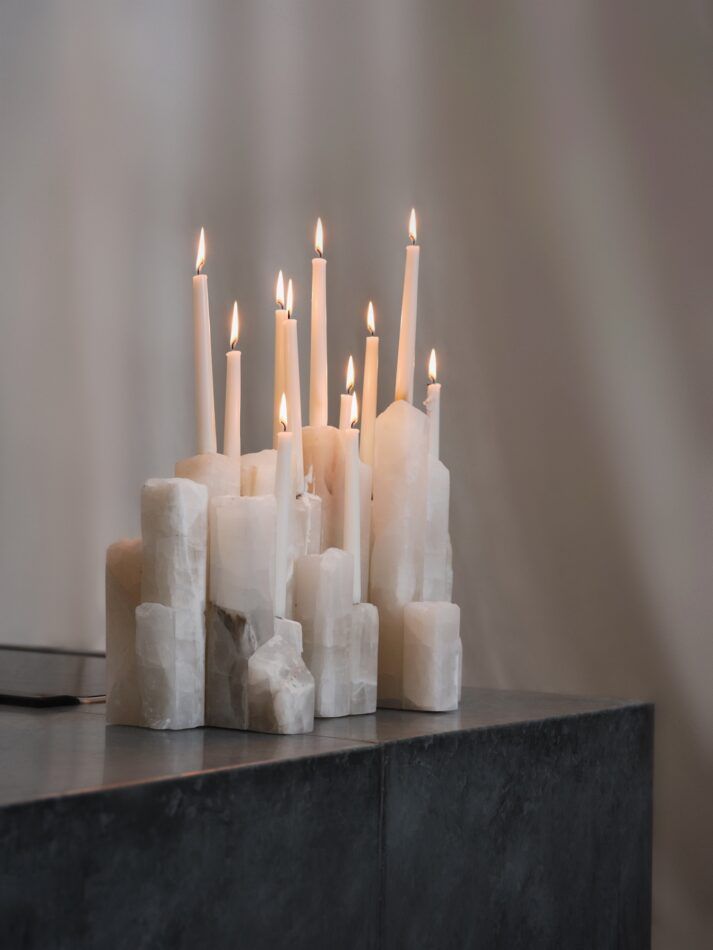
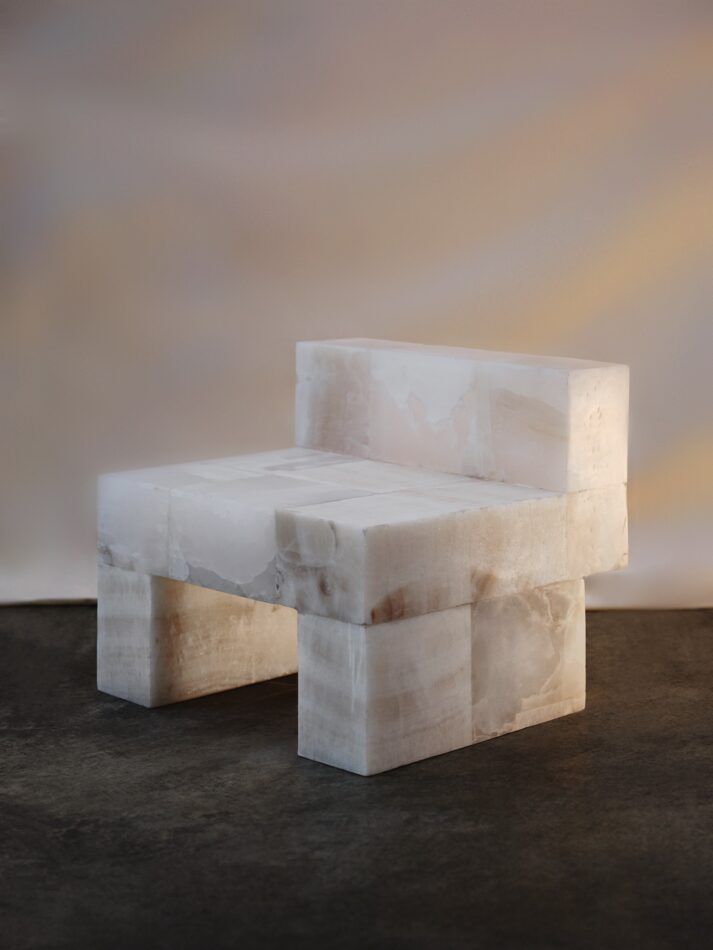
For Tagliaferri, who also contributed a design to the collection, onyx has a particularly strong connection with transparency and light. “That was my starting point,” he says. “I wanted to create a piece that could highlight its translucency.” What he came up with is a screen consisting of three ultrathin onyx panels in striking angular shapes, each framed in metal. The most highly crafted piece in the show, meanwhile, is Belgian designer Pierre De Valck’s Axe table, which replicates at a magnified scale the form of a prehistoric tool. And as exceptions exist to almost every rule, one work uses no onyx at all: Morghen Studio’s monumental brass chandelier, whose branch-like forms were inspired by the umbrella thorn trees found in Africa.
With future Philia Editions collections in mind, the Attalis are seeking to set up a permanent facility in Baja California. Finding the right place, however, is not simple. They plan to continue working with stone, which requires both large workshops, to accommodate the necessary machinery, and flat terrain, to avoid having to shift weighty slabs up and down hills. Once they find the ideal location, their aim is to invite designers to create new collections in situ. “Instead of having to transport design pieces from around the world for an exhibition,” says Ygaël, “we’ll only have to fly in one artist.”


